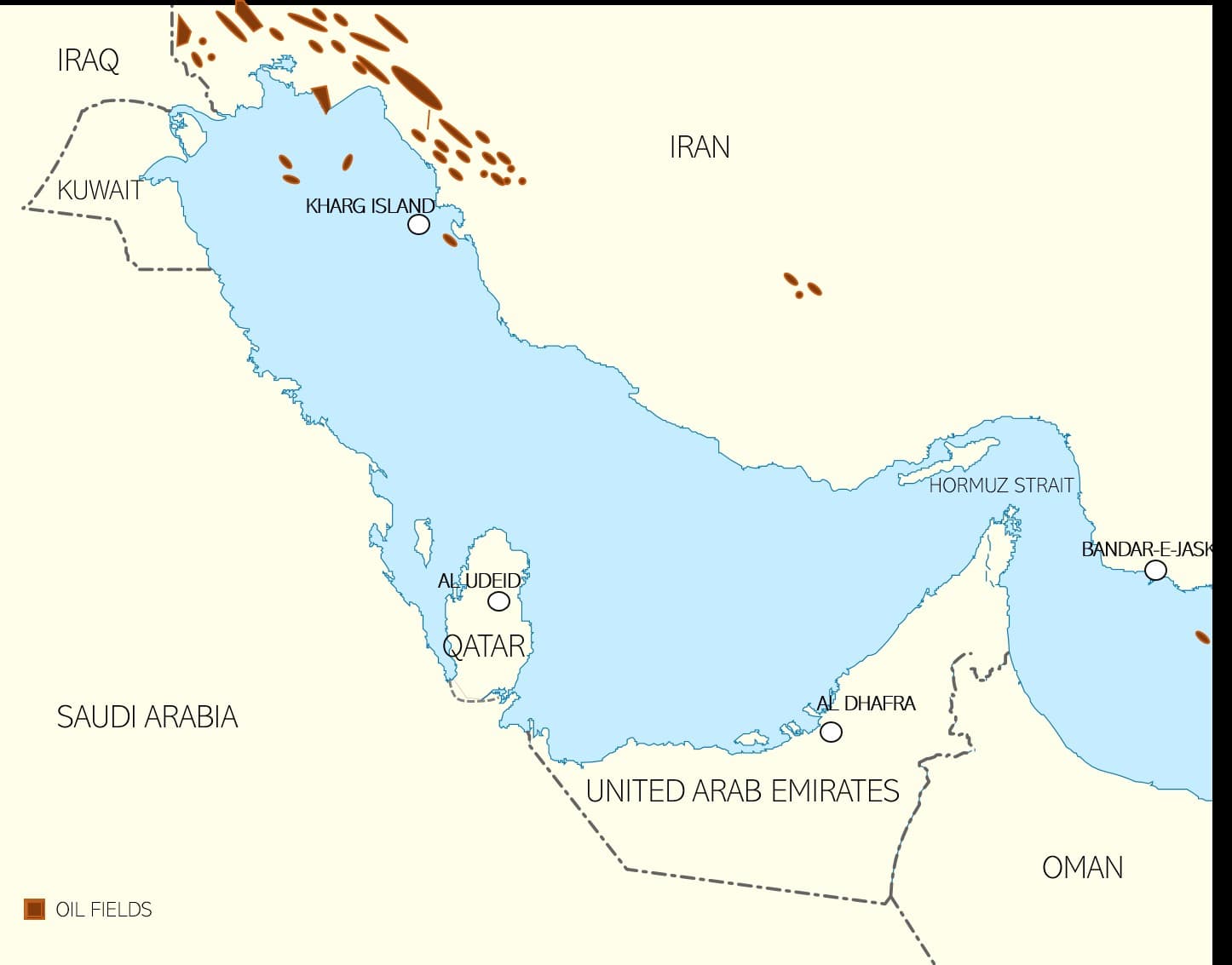Iran Tries to Bypass the Hormuz Strait
Global markets have recently gone into overdrive in anticipation of the US-Iran standoff’s outcome. President Trump is building up pressure on Tehran, his latest move was to announce his chairing of a UN Security Council meeting on Iran (the US is holding the council presidency this month), most likely to lambast once more the Iranian regime, whilst the Iranian authorities are reverting to their traditional threat, the closing off of the Hormuz Strait. Yet behind the bellicose façade, under the international radar Iran has been proceeding gradually with the construction of oil export infrastructure that bypasses the potentially fatal chokepoint and gives the Ayatollah regime a viable alternative to Kharg and Lavan islands, which currently account for the overwhelming majority, more than 95 percent, of Iran’s oil exports.
What’s wrong with Kharg Island?
Kharg Island is Iran’s key export outlet, accounting for 90 percent of the nation’s oil exports. Located opposite Kuwait in the northern part of the Persian Gulf, it is extremely exposed to military threats – apart from Saudi Arabia located just across the gulf, tankers carrying Iranian crude sail past two American Air Bases – Al Udeid in Qatar and Al Dhafra in the United Arab Emirates. It is very unlikely that Iran’s oil exports will come down to zero, a part of the supplies will remain in place, albeit curtailed.
Related: Why Oil And Natural Gas Prices Are Diverging
For instance, Iran will depend to a greater extent on its own shipping fleet, as the leading carriers of Iranian crude so far – the Greeks, accounting for roughly 40 percent of vessels – are increasingly wary of continuing their dealings with Iran. Obstructing Greek tankers carrying Iranian crude is one thing, obstructing Iranian tankers is completely different – under current circumstances, it would carry no big geopolitical risk of antagonization.
What happens if Iran decides to block the Hormuz Strait?
This is highly unlikely to take place – first of all, because all Iranian boasting about it controlling the Strait simply does not match with the facts. Countries on the other side of the strait, primarily UAE, will not sit idly by as Iran acts unilaterally, especially with a U.S. Air Base around. The main strategic reason why Iran will not go to such lengths is its relative military weakness – it has found some ways to circumvent the decade-long arms sales embargo, however, this pales in comparison to the possibilities of its potential adversaries. With Russian submarines built in the 1990s, Chinese-designed missile boats and midget submarines bought from North Korea, Iran’s military successes, in the event of an all-out war, would be very short-term. The Khamenei Regime will opt for the Hormuz blocking option only if the situation goes as far as to threaten its immediate physical security.
Where will the oil export gravity center shift?
Iran’s President, Hassan Rouhani, declared September 4 that one of the primary energy tasks of the nation is to relocate its oil export infrastructure into the Gulf of Oman, away from the Persian Gulf. The new outlet will be the Port of Jask (Bandar Jask) where Teheran intends to construct an oil terminal the export capacity of which will reach 1 mbpd in the 1st stage of the project’s implementation. This should be further buttressed by 10 million barrels worth of storage capacity around Jask. Absent any major disruptions, the 2nd stage of the Jask upgrade project would witness the construction of 2 refineries around the port, as well as bringing total storage capacity to 30 million barrels (equivalent of Kharg Island’s capacity). With a quite tight deadline – works are to be completed in 2021 – and an estimated cost of more than $2 billion, Iran faces an uphill task.
Related: Is This The World’s Most Beautiful Electric Car?
Iran’s biggest difficulty will be to find investors – just to name an example, securing pipelines for the rerouting of all traditional oil conduits will cost approximately $600 million, in this Teheran will rely heavily on foreign technologies and producers. Although both Russia and China could provide state-of-the-art pipelines and transportation equipment, they would do so under the threat of further sanctions from Western powers opposing Iran’s oil activities, so it must be a very lucrative deal for them to agree. So far only Iranian companies expressed their interest to participate in the construction of the Jask Oil Terminal. This is understandable – Kharg Island is close to Iran’s oil-bearing provinces which are in the southwestern part of the country, despite some Irani authorities’ claims that relocating the oil terminal to the Gulf of Oman would decrease logistics costs, it would do quite the opposite.

(Click to enlarge)
Map 1. Iran’s Oil Fields and Infrastructure.
Notwithstanding the cost and the feasibility of the port construction, from the viewpoint of its energy policy Iran’s export diversification drive is very timely, given the heated geopolitical atmosphere. By means of building Jask, it could substantially reduce military risks related to Kharg Island (all the more so that it already has a fully functional Navy base in Jask). On the other hand, it will inevitably run into project delays and cost overruns as the number of foreign parties interested is at bargain-basement levels. An eventual government shift in Iran – an anticipated move towards more radical candidates instead of the moderate Rouhani – would ramp up political support for the project, yet would fail to speed up the construction of Bandar-e-Jask. Absent destructive wars, a mid-2020s phase one commissioning seems like a reasonable bet, until then Iran will have to bear with Kharg Island.
By Viktor Katona for Oilprice.com
More Top Reads From Oilprice.com:
- The Next Global Oil Hotspot
- Asia Braces For Much Tighter Oil Markets
- Oil Tumbles On Mixed Inventory Data


















